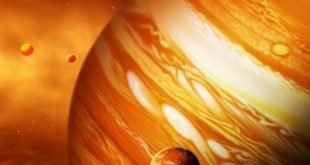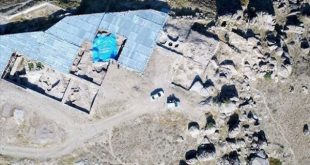 The microbes can be a private version of the Internet
The microbes can be a private version of the Internet
The creation of a huge global network connecting billions of people, can be one of the greatest achievements of mankind to date, but microbes could overtake us in this three billion years. These tiny single-celled organisms are not only responsible for the appearance of all life on Earth. They may have their own version of the world wide web and “Internet of things”. Here’s how they work.
Like our own cells, microbes process the DNA fragments in the form of coded messages. These messages contain the information to build proteins in the molecular machines which can solve specific tasks, such as fixing the cell. But microbes don’t just get these messages from their own DNA. They also ingest fragments of DNA from their dead relatives or exchange them with their living fellows.
Then these stretches of DNA included in their genomes that are similar to the computers that control operation of the entire protein machinery. Thus, the tiny germ is a flexible learning machine, which is reasonably looking for resources in their environment. If one protein machine is not running, the microbe tries another. Trial and error solves all problems.
But germs are too small to act independently. Instead, they form companies. Germs lived in giant colonies, including trillions of members, since the beginning of time. These colonies even left behind mineral structures known as stromatolites. These microbial cities, frozen in time like Pompeii, testify to the life that existed billions of years ago.
Microbial colonies are constantly learning and adapting. They evolved in the oceans and gradually conquered the earth — and at the heart of their development strategy was information sharing. As we have seen, individual members of companies to exchange chemical messages in a very coordinated manner. Thus, microbial society effectively creates a collective “mind”.
This collective intelligence sends a piece of software, written in DNA code, to the trillions of microbes with one goal: to fully explore the local environment on the subject of resources with the use of protein machines.
When resources are exhausted in one place, microbial expedition move to a new land of promise. They convey their findings to the base using different types of chemical signals, calling on the microbial society to transform itself from settler colonialism.
Therefore, the microbes eventually conquered the entire planet, creating a global microbial network that resembles our own world wide web, but uses biochemical signals instead of digital. Theoretically, the signal emitted by the waters of the South pole, could be fast enough to reach the waters of the North pole.
The Internet of living things
The similarities with the technology people do not come to an end. Scientists and engineers are working on expanding our own information networks to Internet of things, integrating all kinds of devices equipped with a microchip that allows you to see and communicate. The fridge can warn you when you are running low on milk. Your house will tell you when it was being robbed.
Germs build their own version of the “Internet of things” a long time ago. We can call it the “Internet of living things”, although he is better known as biosphere. Every organism on the planet is bound in this complex network, which in turn depends on microbes.
More than a billion years ago, a microbe found himself inside of the other microbe, which became his host, a carrier. Two of these microbes have formed symbiotic hybrid — eukaryotic cell — the basis for most life forms that we know today. All plants and animals evolved from this microbial merge and become, thus, contain a biological “connection”, which connects them with the “Internet of living things”.
For example, people are designed in such a way that we can’t function without trillions of microbes inside our bodies (our microbiome) that help us even in such simple things, like digestion and the production of immunity. We are so overloaded with microbes that even leave a unique microbial fingerprints on each surface, which affect.
The Internet of living things — a well-functioning system. Plants and animals live in ecological waste generated by the microbes. Meanwhile, for the germs of all plants and animals, according to author Howard bloom, “it’s just cattle, the flesh of which they ate” the corpse, which they digest and recycle.
Microbes are also a potential space tourists. If people go into deep space, our microbes will fly with us. The Internet of living things can stretch long grasping hands in space.
The paradox is that we still perceive germs as the lower organisms. The reality is that germs are invisible and intelligent rulers of the biosphere. Their global biomass is superior to our own. They are the inventors of the information society. Our online only a by-product of microbial information games, started three billion years ago.
© 2017 – 2019, paradox. All rights reserved.




